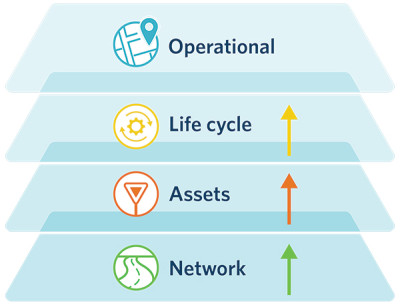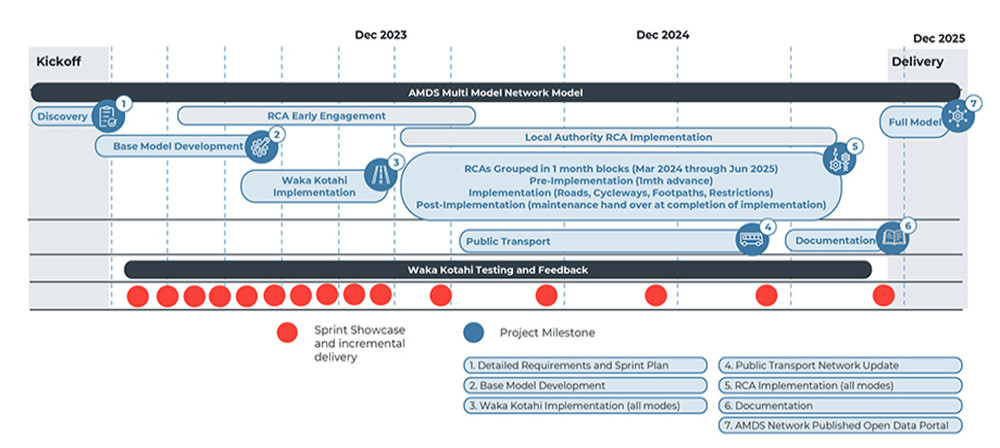The development of the network model is the next phase of the Asset Management Data Standard (AMDS) work programme.
In partnership with the sector, we have created a living centreline that provides a single source of truth and enables better planning and management of New Zealand’s transport networks.
At its simplest, the network model is a direct replacement of a Road Controlling Authority’s (RCAs) current road centreline, updated with a basic understanding of where vehicles can travel, as well as pedestrians, cyclists, other micro-mobility (for example scooters and wheelchairs), and public transport users.
The network model is the backbone to the AMDS and critical to the management, analysis and reporting of land transport assets. This model underpins the standard and is foundational to pulling the performance and associated asset data together.

The network model represents a significant step in supporting digital engineering across the transport sector and opens the door to exciting insights and understanding of performance. With a shared network model to support our evidence-based decision making and digital tools, we are better placed to achieve the vision of moving New Zealand forward – together, seamlessly, safely, and sustainably.
The network model visualises a range of data on a map, including:
The network model includes the following modes:
The network model is:
Benefits of a network model include:
The network model project is being delivered using an agile methodology. NZTA has elected to work closely with WSP to co-design using agile processes. This unique working relationship means the project team comprises experts from across NZTA and the transport sector who work closely each day to deliver the model into all RCAs across the country.
Our approach to this project featured an early ‘discovery’ phase, where industry experts and end-users helped define the requirements for the network model through a series of workshops, identifying user stories and feature development.
Our solution involves building and hosting the model using a geospatial technology environment within NZTA. Vast quantities of information from RCAs are being imported in 11 staged groups over 18 months and aligned to form a coherent whole, showing how and where different transport modes can move.

View larger image [PDF, 80 KB]
Implementation of the network model into the transport sector started in February 2024. To date, the project has successfully implemented the model into groups one to four including NZTA state highways and 17 RCAs. The team are actively working with the next 12 RCAs who will go live with the model before January 2025. All remaining RCAs will implement the model before June 2025.